A Maya Game of Thrones and Artistic Innovation in Golden Kingdoms
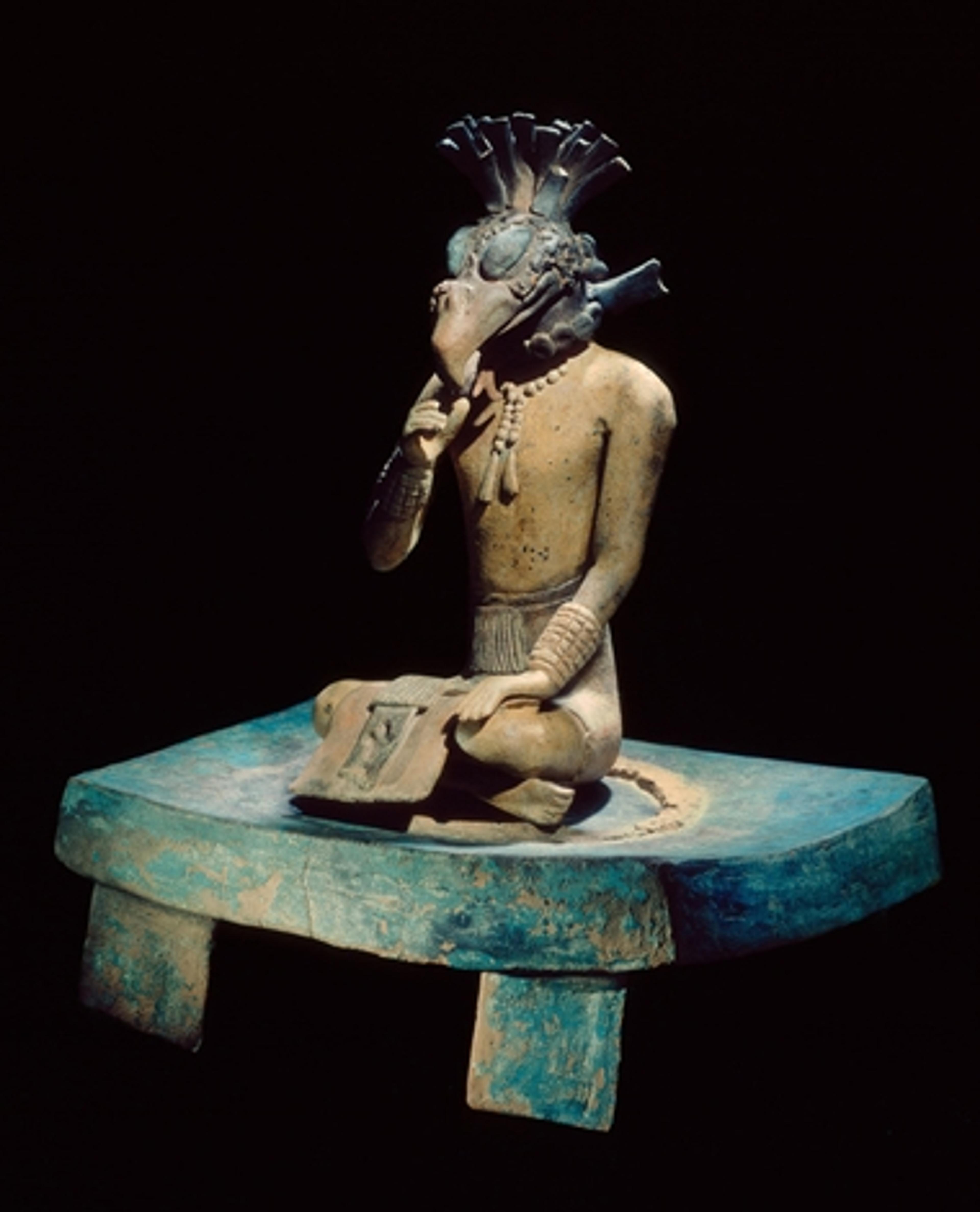
«Unlike Westeros—the fictional realm in George R. R. Martin's A Song of Ice and Fire, brought to life on screen in HBO's Game of Thrones—the Classic Maya world (ca. A.D. 250–900) was not unified under one family or king, as was the case at the royal capital of Kings Landing. There are, however, parallels between the Classic Maya city-states and the royal houses from the fictional universe. Competition for resources and political power led Classic Maya royal courts to bolster their own legitimacy through astonishing architectural and artistic programs in the mid-first millennium A.D. that recall similar histories from the global past.»
Left: Figure with bird mask, A.D. 550–900. Mexico, Chiapas, Palenque, Building 3 of Group B, Tomb 1. Maya. Ceramic, figure: 17 x 8.3 cm (6 11/16 x 3 1/4 in.), throne: 6.6 x 18.6 cm (2 9/16 x 7 5/16 in.). Museo de Sitio de Palenque "Alberto Ruz L'Huillier" (10-458661), Secretaría de Cultura—INAH. Photo by Jorge Pérez De Lara
A tale of two of these Maya cities, Calakmul and Palenque, unfolded in such a way. Distant rival royal courts, located about several days' walk from each other, were home to dynasts with a divine claim to sovereignty over their respective landscapes. Each city-state had developed from centuries of local building, but in disparate environments: one with massive, monumental pyramids, in the hot lowlands that depended on rains to fill seasonal water reserves; the other on the edge of mountains and river plains flush with natural springs, and refined palaces and temples covered in detailed low-relief sculpture. The rulers of each counted on extensive networks of loyal nobles, who presumably supplied them with tribute goods, manual labor, and warriors. Both claimed an ancient lineage stretching back to mythological times, as expressed through extensive texts and artistic programs. These opposing claims, in addition to probable competition in the exchange of luxury imports, led to clashes towards the end of the sixth century that altered the destinies of these places for hundreds of years to come.
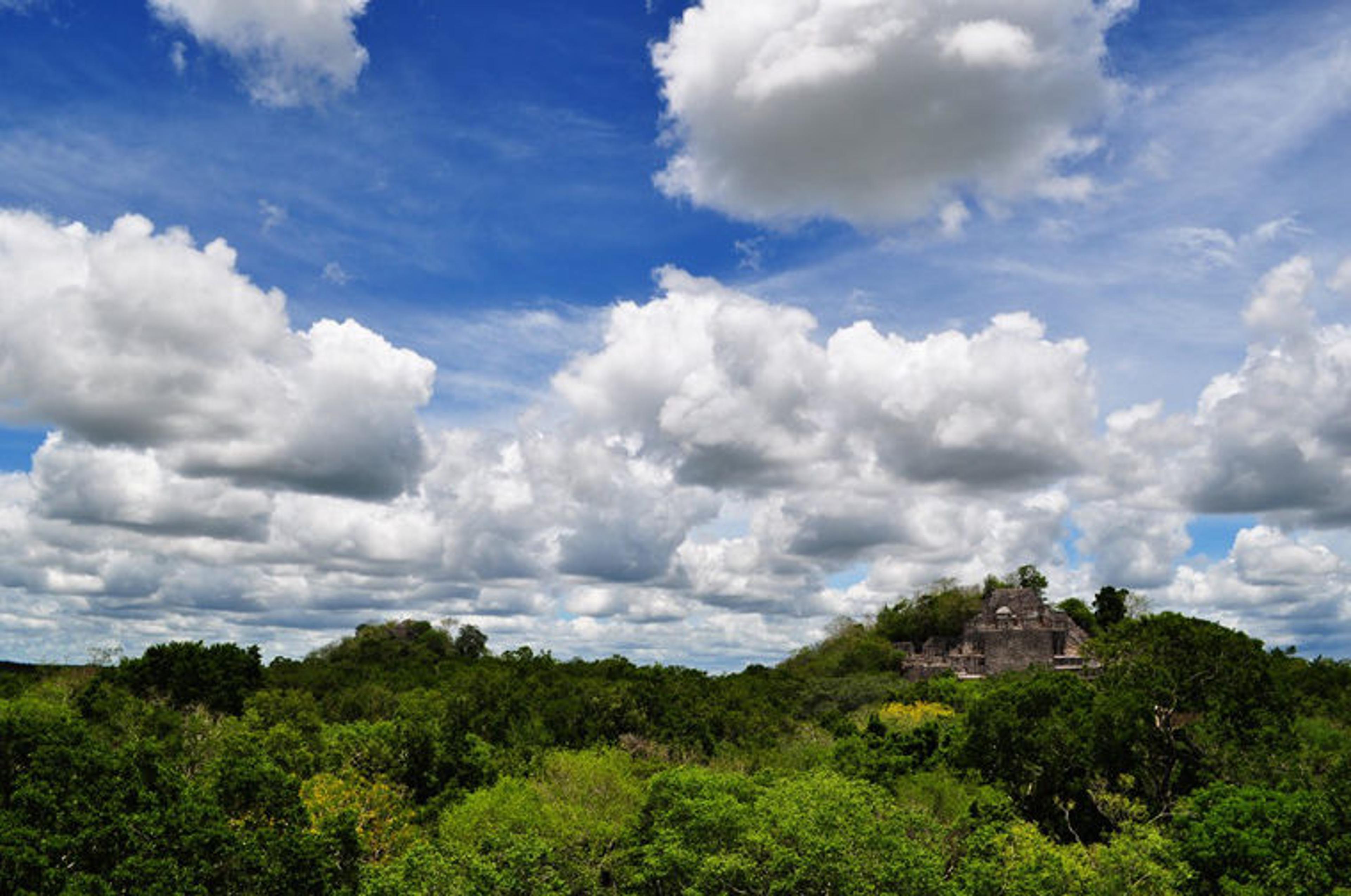
Fig. 1. The view of Structure I at Calakmul from atop Structure II. Photo by the author
Located in the rain forest of Campeche, the sprawling city of Calakmul was home to one of the most powerful ancient Maya dynasties, founded in the first centuries A.D. and abandoned in the tenth century (fig. 1). The powerful kings and queens who ruled Calakmul referred to themselves as holy lords of the Snake Kingdom, and they dominated the Classic Maya political landscape through marriage alliances, claims of political sovereignty, and violent campaigns of warfare.
Recent research by Ramón Carrasco Vargas and others at Calakmul has revealed major discoveries, including some of the richest tombs ever found in the Maya region. Some of these tombs, including one of an important queen, are featured in the current exhibition Golden Kingdoms: Luxury and Legacy in the Ancient Americas.
At its height, Calakmul encompassed some twenty square kilometers, with massive pyramids and platforms organized around elegant plazas. Calakmul Structure II, the largest building at the site, contains some of the best-preserved architectural sculpture known from the Late Preclassic period (ca. 300 B.C.–A.D. 250). Early Classic (ca. A.D. 250–550) rulers at Calakmul commissioned finely wrought works of royal regalia, including incised jade belt plaques and distinctive modeled and incised pottery. The innovative artist workshops at the growing capital also produced astounding works in marine shell, such as a queen's collar from the seventh century (fig. 2).
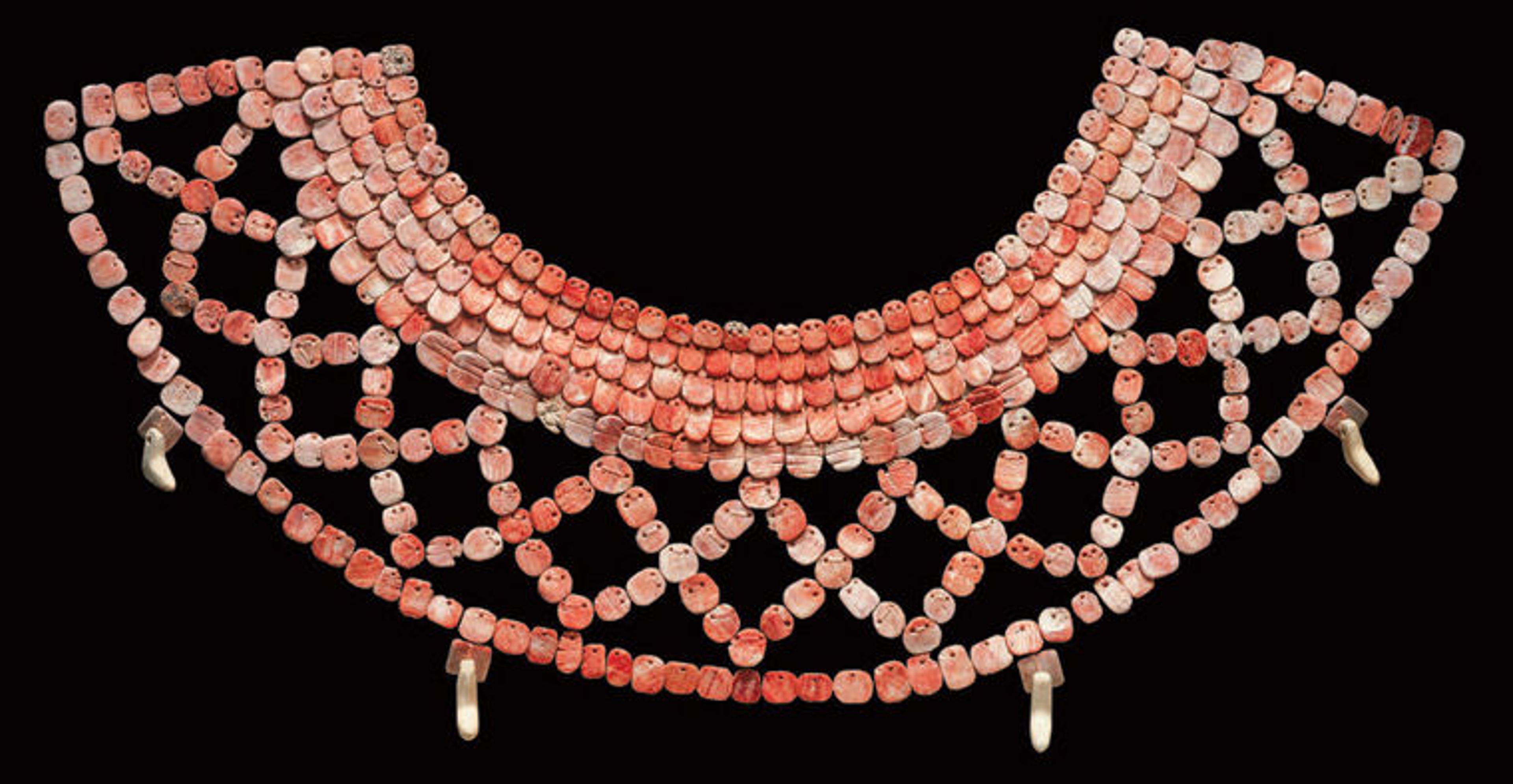
Fig. 2. Collar, A.D. 600–660. Mexico, Campeche, Calakmul, Structure XV, Tomb I. Maya. Shell (Spondylus princeps, Strombus gigas), H. 12 5/8 x W. 26 x D. 3/4 in. (32.1 x 66 x 1.9 cm). Museo Arqueológico de Campeche, Fuerte de San Miguel (10-629922 0/383), Secretaría de Cultura—INAH
In A.D. 562 forces from Calakmul defeated those at the great city of Tikal, Guatemala—under the supervision of a ruler known as Sky Witness (r. ca. A.D. 561–572)—which ushered in the golden age of Calakmul as a superpower. A later ruler known as Scroll Serpent (r. ca. A.D. 579–611) turned the military attention of Calakmul to the west instead of the south, attacking Palenque, Chiapas, first in the year A.D. 599 and again in 611. These are the most distant conflicts ever recorded in the Classic Maya world, and the enmity of the snake kings against those at Palenque—who claimed several titles, including the Bone dynasty—must have been quite strong to undertake intense travel.
The reign of King Yuknoom Ch'een II (r. A.D. 636–686), known as Yuknoom the Great, cemented Calakmul's role as a bustling center of ritual and commerce. Yuknoom the Great established a network of vassal rulers loyal to Calakmul, from the Usumacinta River region to as far away as western Belize, thus securing trade networks that allowed luxury raw materials and finished works to flow into the city. Artistic production under Yuknoom the Great also reached new heights, as seen in the spectacular murals discovered in 2004 in the Chiik Nahb complex (fig. 3).

Fig. 3. Large-scale murals in the Chiik Nahb complex show Calakmul residents engaged in the exchange of goods, including food, tobacco, salt, and clay vessels. Photo by Ramón Carrasco Vargas and María Cordeiro Baqueiro
Yuknoom the Great's successor, Yich'aak K'ahk, was less successful in battle against his archrival Jasaw Chan K'awiil I at Tikal, and was defeated in A.D. 695. He was likely interred in a burial known as Tomb 4 within Structure II, accompanied by rich funerary offerings including an elaborate pectoral and collar made of jade (fig. 4). Despite the military loss, the royal family continued to be buried for some time in a lavish style, their tombs filled with elaborate jade mosaic masks, heirloom ear ornaments, and shell collars.
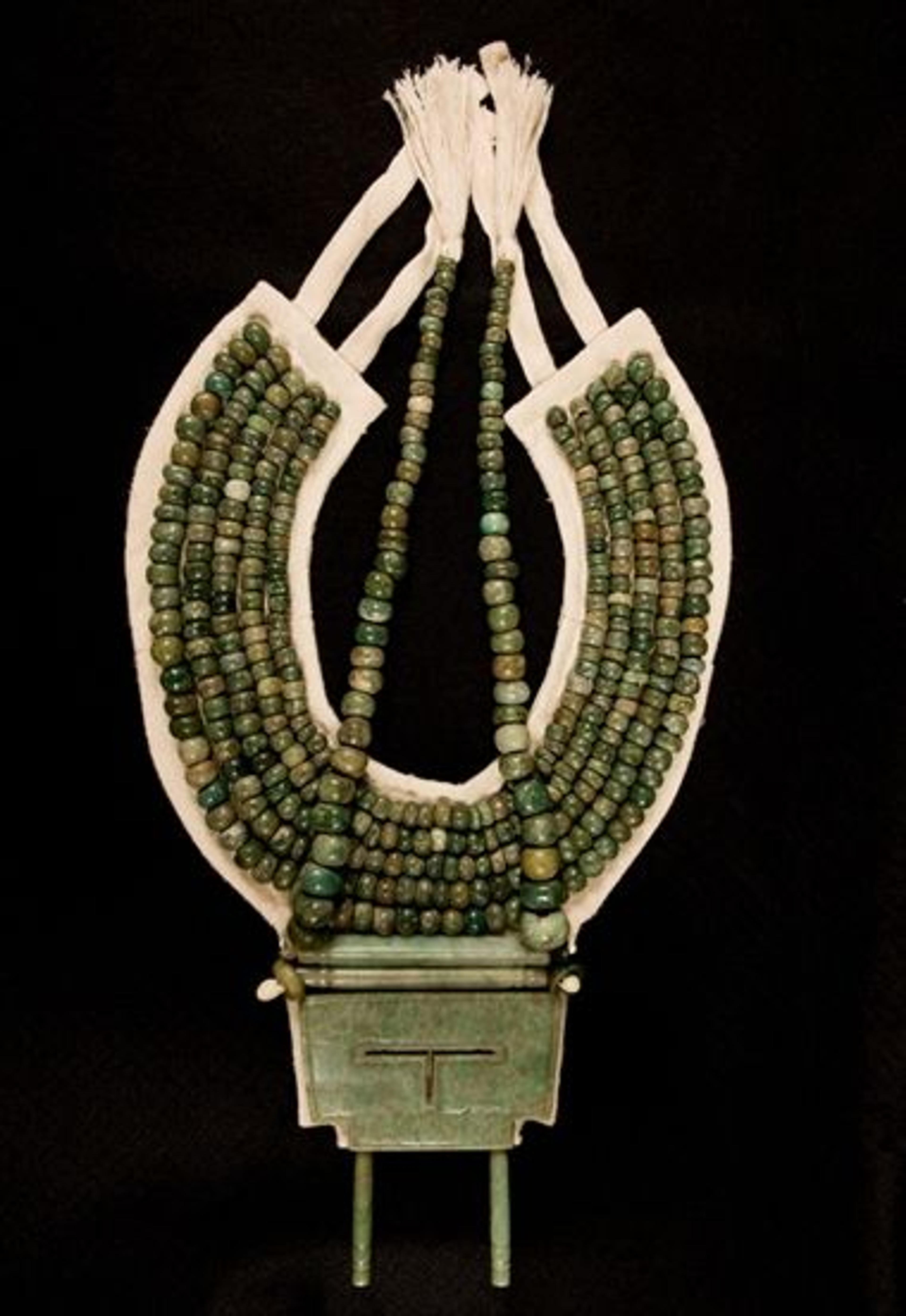
Fig. 4. Collar and Ik' pectoral, A.D. 660–750. Mexico, Campeche, Calakmul, Structure VII, Tomb I. Maya. Jadeite, H. 21 1/4 x W. 5 1/2 x D. 13/16 in. (54 x 14 x 2.1 cm). Museo Arqueológico de Campeche, Fuerte de San Miguel (10-290657 0/73, 10-342891 0/339), Secretaría de Cultura—INAH
Throughout the eighth century, potters and painters produced elegant vessels for royal feasts; Calakmul and nearby centers in northern Guatemala are known as major producers of "codex-style" pots, so named for the calligraphic similarity to the later painted books. One of the last great rulers at Calakmul, Yuknoom Took' K'awiil (r. A.D. 702–731) also commissioned some of the finest known stelae from his atelier of sculptors.
Calakmul continued to thrive as a creative capital into the ninth century, but the flow of valuable materials such as jade into the city began to slow due to the kingdom's waning influence across the Maya world. Toward the end of the ninth century, Calakmul as a center for luxury arts entered into a steep decline. By the beginning of the tenth century, despite the mention of a final ruler named Aj Took ("He of Flint") on a crudely hewn stela, the monumental record fell silent as people seemed to have migrated northward to sites in the Puuc region and cities like Chichén Itzá.
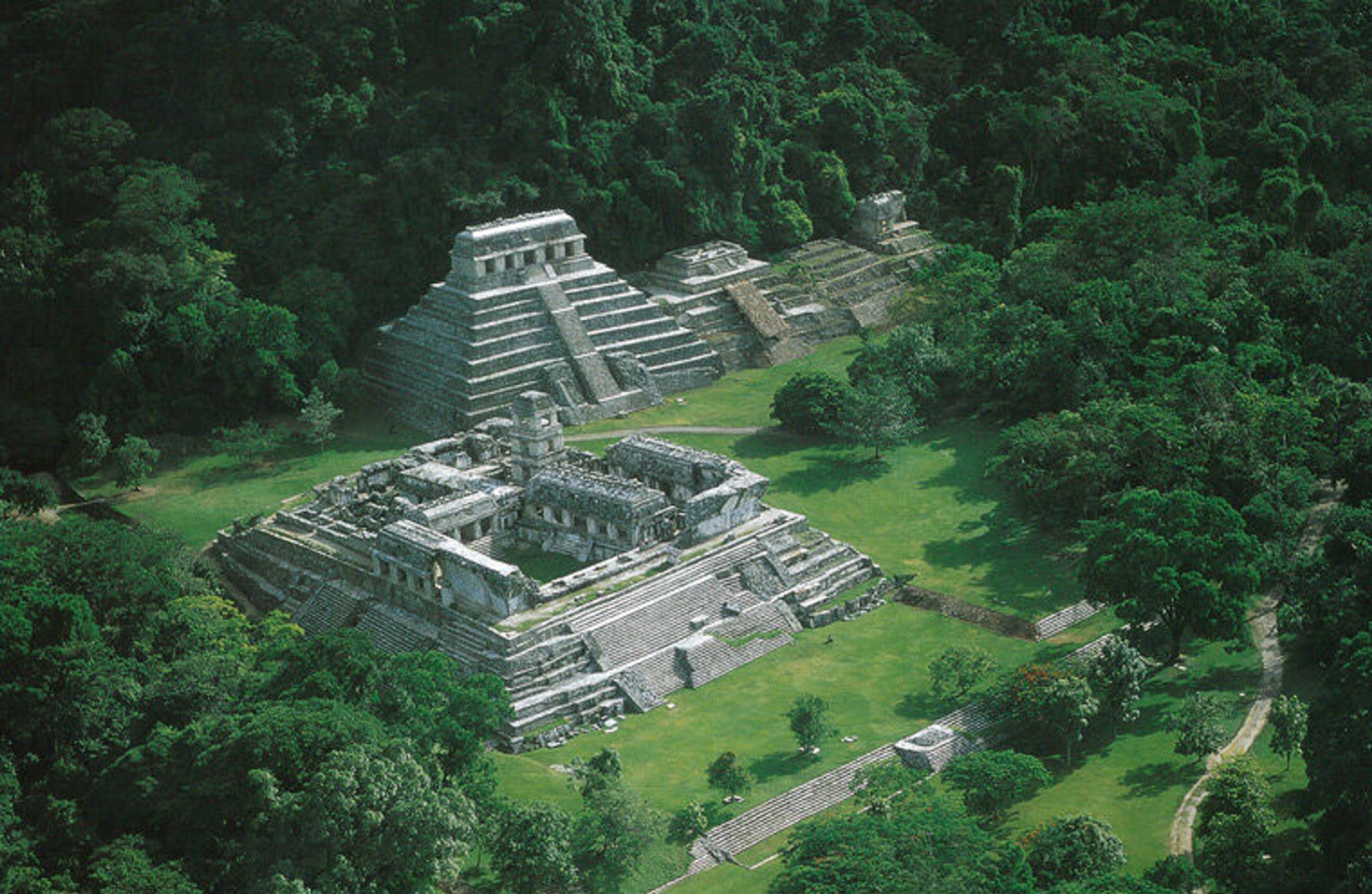
Fig. 5. Aerial view of Palenque, with the palace at left and the Group of the Cross in the distance. The Temple of the Inscriptions and Temple XIII, at right, are the funerary monuments of Pakal and the Red Queen, respectively. Photo by Danny Lehman/Corbis/VCG
The royal patrons at the ancient Maya site of Palenque, Chiapas, Mexico—which had fallen victim to attacks by Calakmul in 599 and 611—cultivated generations of the most innovative architects, engineers, artists, and scribes in their courtly capital, described in the hieroglyphic script as Lakamha' ("Great Water") (fig. 5).
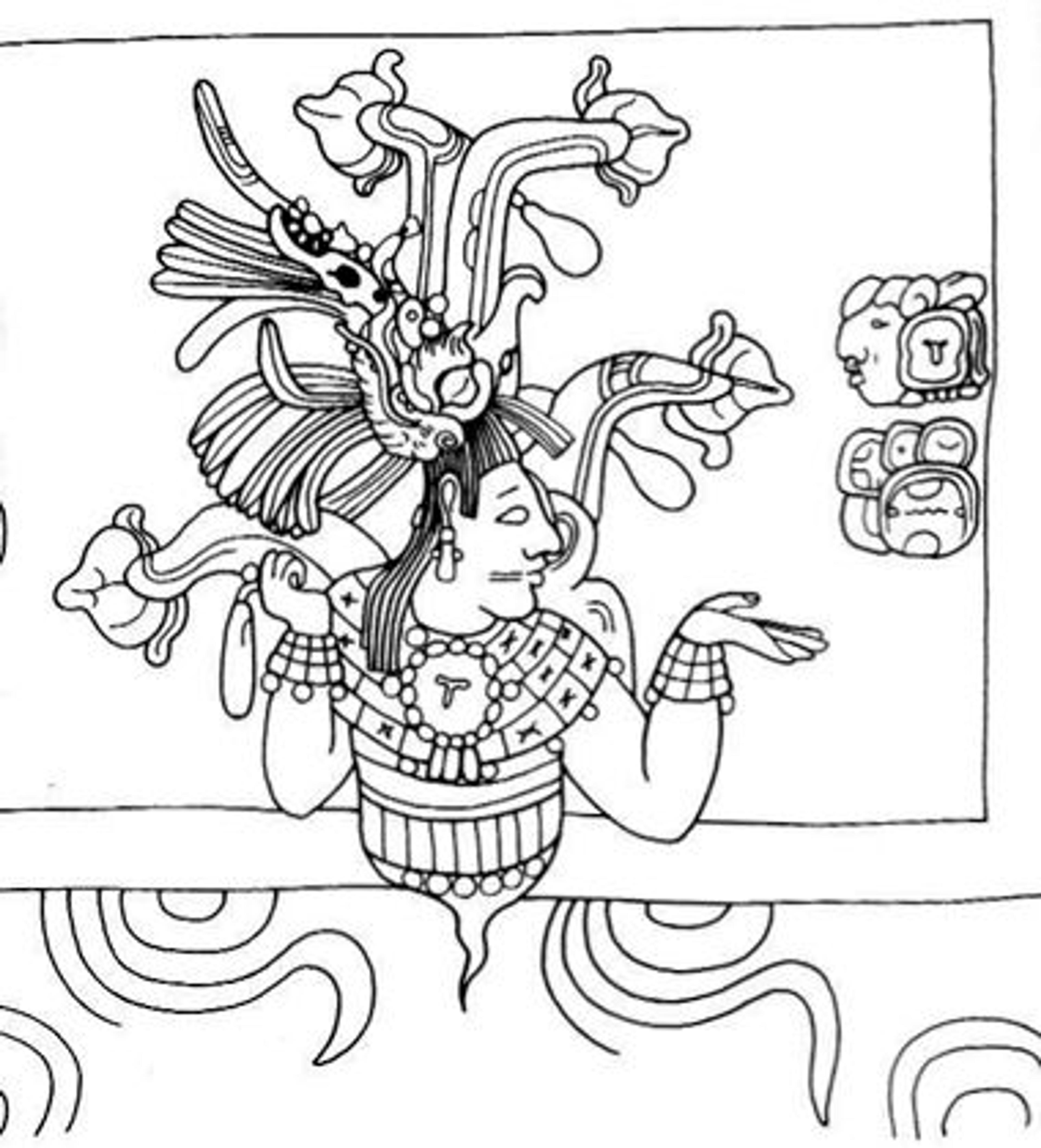
Fig. 6. Lady Yohl Ik'nal, as depicted in Pakal's sarcophagus, shown as an ancestral plant emerging from a cleft in the soil and sprouting vegetation. From Chronicle of the Maya Kings and Queens, 160.
In the late sixth century, a ruler named Kan Bahlam I died without any surviving male heirs, so his daughter, Lady Yohl Ik'nal, became the first and longest-serving queen of Palenque in A.D. 583 (fig. 6). Unfortunately, for reasons that are not recorded in the inscriptions, her contemporary at Calakmul, Scroll Serpent, "axed" the city of Palenque in A.D. 599. This military campaign did, however, culminate in the destruction of images of Palenque's longstanding patron deities. The attack does not seem to have immediately ended her reign; she died five years later.
Her son, known as Aj Ne' Ohl Mat, acceded to the throne in A.D. 605, but violence came to Lakamha' again a scant six years later, this time at the hands of the lords of Calakmul. Emphasized in the important later texts from the Temple of the Inscriptions, the sacking of Palenque at the hands of its rivals from Calakmul, in both A.D. 599 and 611, must have devastated the royal court. Despite these events throwing the dynasty into a period of uncertainty, they soon spurred innovation.

Fig. 7. Platform panel of Temple XXI, A.D. 736. Mexico, Chiapas, Palenque, Temple XXI. Maya. Stone, pigment, H. 3 3/4 x W. 90 5/8 x D. 4 3/4 in. (9.5 x 230.2 x 12.1 cm). Museo de Sitio de Palenque "Alberto Ruz L'Huillier" (10-629761), Secretaría de Cultura—INAH. Photo by Jorge Pérez De Lara
K'inich Janaab Pakal I, the greatest ruler of Palenque, took the throne at the age of twelve, in A.D. 615, and subsequently revived Palenque through an astonishing blitz of construction (fig. 7). This is best seen in the palace, which contains arched rooms that boast wider and airier interiors than those of any other Maya city, as well as a multistory tower rarely found in Maya architecture (see fig. 5).
The extraordinary Temple of the Inscriptions, the funerary pyramid of Pakal, contained his elaborate burial beneath a megalithic, masterfully carved sarcophagus lid. Pakal's descendants covered his body in imported imperial jade: a beaded collar, bracelets, and a mosaic mask. A nearby building held the tomb of Pakal's queen, Lady Tz'akbu Ajaw, who bore a similar mask made of malachite from a local mine. This noblewoman is known now as the Red Queen for the crimson cinnabar that completely covered her rich burial (fig. 8).
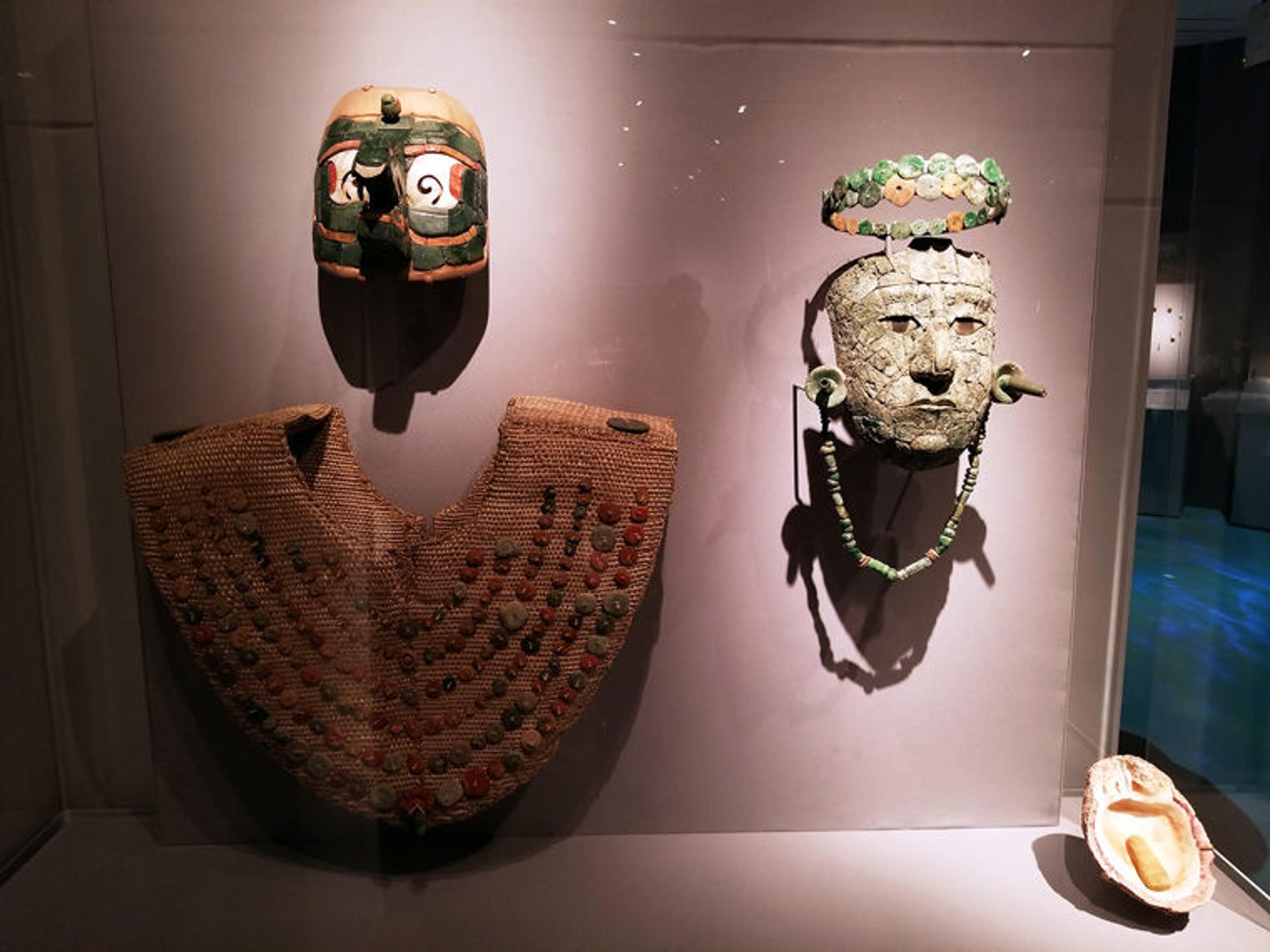
Fig. 8. The funerary regalia of Lady Tz'akbu Ajaw, the Red Queen. Museo de Sitio de Palenque "Alberto Ruz L'Huillier," (10-461006, 10-629739 0/39, 10-629740 5/55, 10-654436 0/185, 10-654439 0/132, 10-117891, 10-117830 1/2 [10-604151, 10-604150]), Secretaría de Cultura—INAH
Pakal's son, K'inich Kan Bahlam II, sought to make his own mark at Palenque. He constructed a triad of buildings known as the Group of the Cross, dedicated to the mythic founding gods, in A.D. 692. When Kan Bahlam died in A.D. 702, his younger brother, K'inich K'an Joy Chitam II, acceded to the throne but was taken captive by his rival at nearby Tonina in A.D. 711. He died without any heirs, perhaps in captivity—a second major break in the dynastic line, which also set the stage for a great revival.
The ruler K'inich Ahkal Mo' Naab III, who took power in A.D. 721, commissioned another extensive program of relief sculpture, including the Tablet of the Slaves, which shows him seated on the backs of two prisoners as he receives gifts from his parents. The pinnacle of Palenque's sculptural skill is seen in the group of buildings dedicated during Ahkal Mo' Naab's reign. One sculpture from these buildings is the stunning panel from Temple XXI, which features a retroactive scene in which Ahkal Mo' Naab receives a ritual implement from Pakal, his grandfather, who himself was in the guise of a founding deity (see fig. 7).
Through the visual arts, one of the last great rulers of Palenque channeled the power of the founding deities and illustrious forbearers, who, in turn, had also fed political competition with artistic creativity. The "Classic" period—fraught with violence, political struggles, and wide class disparities—thus cultivated intellectual and artistic greatness. The Maya case study is one of many in Golden Kingdoms that illustrates slices of time in which ancient American kings and queens fought for status through the brilliance of their artists.
Resources
Carrasco Vargas, Ramón, and María Cordeiro Baquero. "The Murals of Chiik Nahb Structure Sub 1-4, Calakmul, Mexico." In Maya Archaeology 2: Featuring the Ancient Maya Murals of Calakmul, Mexico, edited by Charles Golden, Stephen Houston, and Joel Skidmore, 8–59. San Francisco: Precolumbia Mesoweb Press, 2012.
González Cruz, Arnoldo. La reina roja: Una tumba real de Palenque. Mexico City: Conaculta, INAH, 2011.
Martin, Simon, and Nikolai Grube. Chronicle of the Maya Kings and Queens, 2nd ed. New York: Thames & Hudson, 2008.
Martin, Simon, Stephen Houston, and Marc Zender. "Sculptors and Subjects: Notes on the Incised Text of Calakmul Stela 51." Maya Decipherment. Accessed April 5, 2018. https://decipherment.wordpress.com/2015/01/07/sculptors-and-subjects-notes-on-the-incised-text-of-calakmul-stela-51/.
Stuart, David, and George Stuart. Palenque: Eternal City of the Maya. New York: Thames & Hudson, 2008.
Related Content
Golden Kingdoms: Luxury and Legacy in the Ancient Americas, on view at The Met Fifth Avenue through May 28, 2018
See more digital content related to Golden Kingdoms, including a walkthrough of the recent exhibition in English and in Spanish.
Read more articles in this exhibition's blog series.
Purchase a copy of the exhibition catalogue in The Met Store.
James Doyle
James Doyle is an assistant curator in the Department of the Arts of Africa, Oceania, and the Americas.
Follow James on Twitter: @JamesDoyleMet